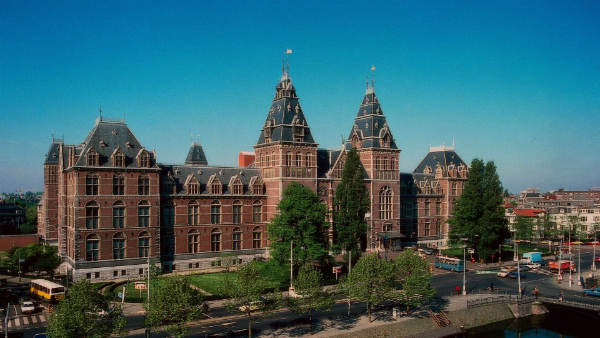Art World
Amsterdam’s Rijksmuseum Wants You to Sketch, Not Selfie
The campaign is called #startdrawing.

Photo via: Youtube
The campaign is called #startdrawing.

Cait Munro

The saying may be “take a picture, it’ll last longer,” but Amsterdam’s recently reopened Rijksmuseum has a different idea. The institution, which features masterworks by artists like Vincent van Gogh, Frans Hals, Rembrandt van Rijn, and Johannes Vermeer, is trying to discourage photography in its galleries, asking visitors instead to draw with their own two hands the artworks they wish to remember.
The campaign is called #startdrawing (the museum obviously realizes that even if the point is to get people off their phones, a good hashtag never hurts), and, according to the museum’s website, is about helping visitors “discover and appreciate the beauty of art and history through drawing.”
The Rijksmuseum will provide free sketch paper and pencils to museumgoers, and even host a drawing class every Saturday.

A drawing class at the Rijksmuseum.
Photo: Rijksmuseum.
“In today’s world of mobile phones and media, a visit to a museum is often a passive and superficial experience,” says the museum. “Visitors are easily distracted and do not truly experience beauty, magic and wonder.”
While the institution hasn’t outright banned the use of cameras and cell phones, it has placed a massive sign on the building’s majestic facade featuring a cartoon camera with a red X through it, so it’s difficult not to get the message.
The Rijksmuseum isn’t the first institution to take on today’s photo-obsessed culture—earlier this year, several institutions, including the Metropolitan Museum of Art and the Museum of Modern Art in New York and the Museum of Fine Arts, Boston, banned selfie sticks, noting that constant picture-taking is distracting and that the sticks can be dangerous to both visitors and artworks.
Unless you’re an extremely talented artist, it may be hard to wrap your mind around how, exactly, a pencil sketch is supposed to replace a photograph. But never fear, the museum warns: “Just think of this as being ‘all about the journey, not the destination.’ You don’t even have to be able to draw, because this is not about the final result, but rather about looking at what you want to draw.”